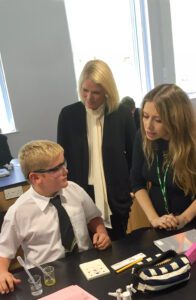The Circular Economy model is becoming more popular as an idea in economics, and several organisations have begun to explore how it could be applied in schools.
In summary, a Circular Economy is that in which the input of new resources and output of old resources as waste is minimised as much as possible. Linear forms of production and consumption are avoided as far as possible, and all elements should be reused, repurposed, or recycled.
A Circular Economy model is very important due to the environmental and social justice crises which we are facing internationally. In the UK, 
What’s more, resource extraction and processing can also be a damaging process for people and our planet. Plastic is made from oil, a fossil fuel, and many materials are mined or grown internationally. This can lead to communities being forced to leave their homes to make space for companies producing these resources, or processes like deforestation and desalination emerging as a result. Limiting the number of new materials and resources we need in our everyday lives makes a lot of sense for people and the environment. This is especially true when you remember that we live on a planet with finite resources!
Organisations such as Eco-Schools and the Ellen MacArthur Foundation have produced learning and teaching materials for all ages about the Circular Economy. Have a look at Eco-School’s E-Space project here, and Ellen MacArthur’s videos, lesson plans, and workshop activities here.








